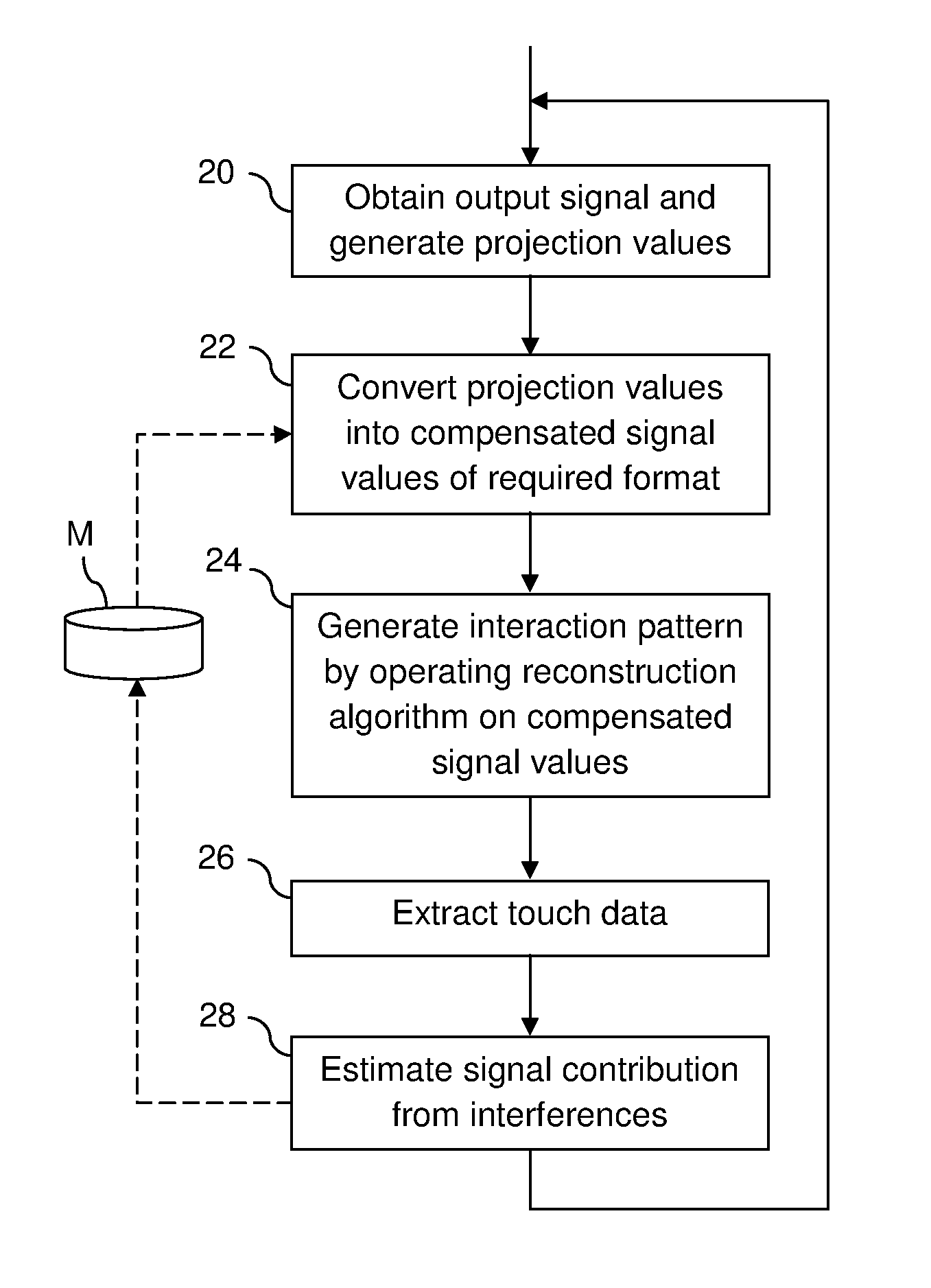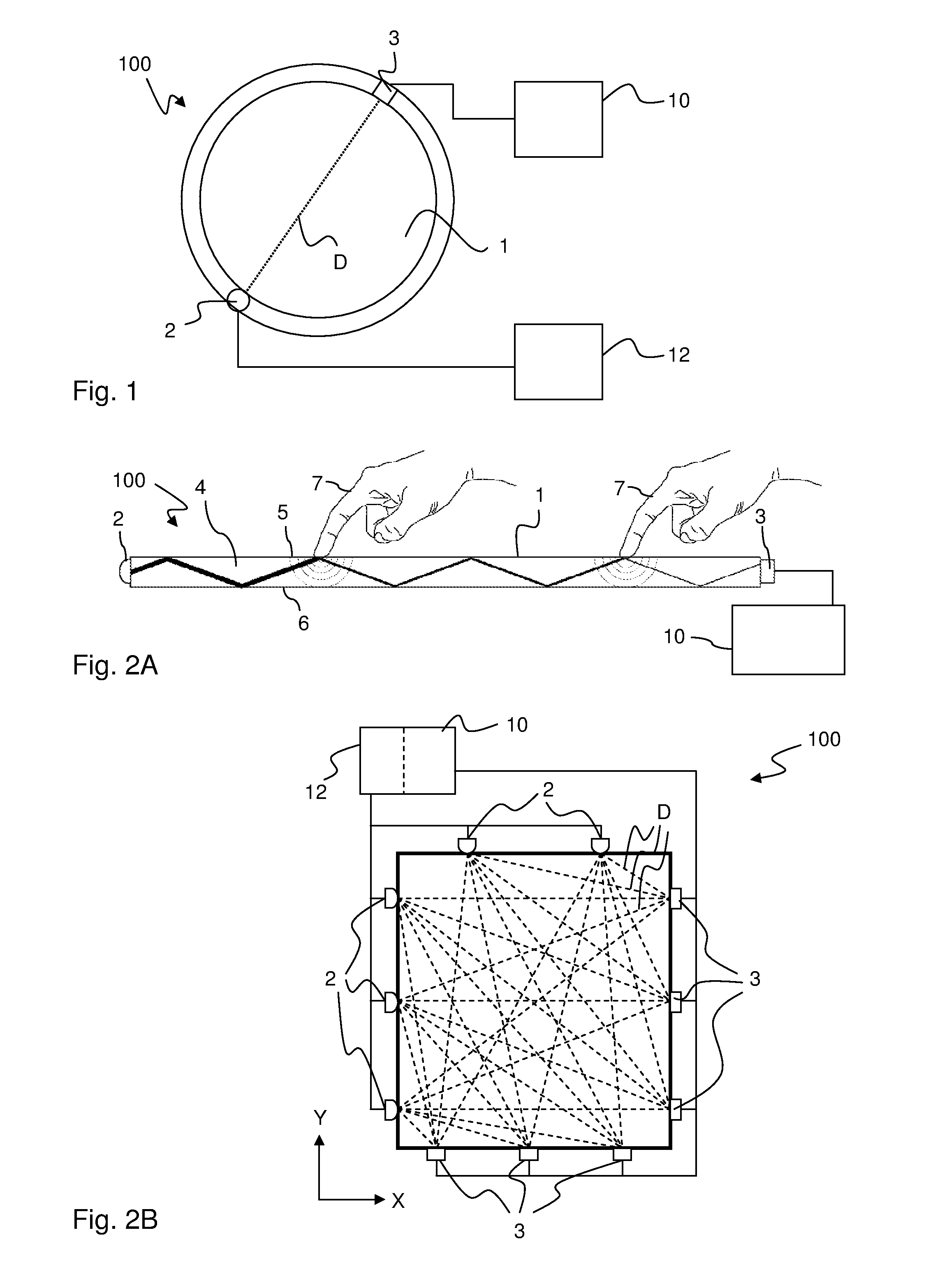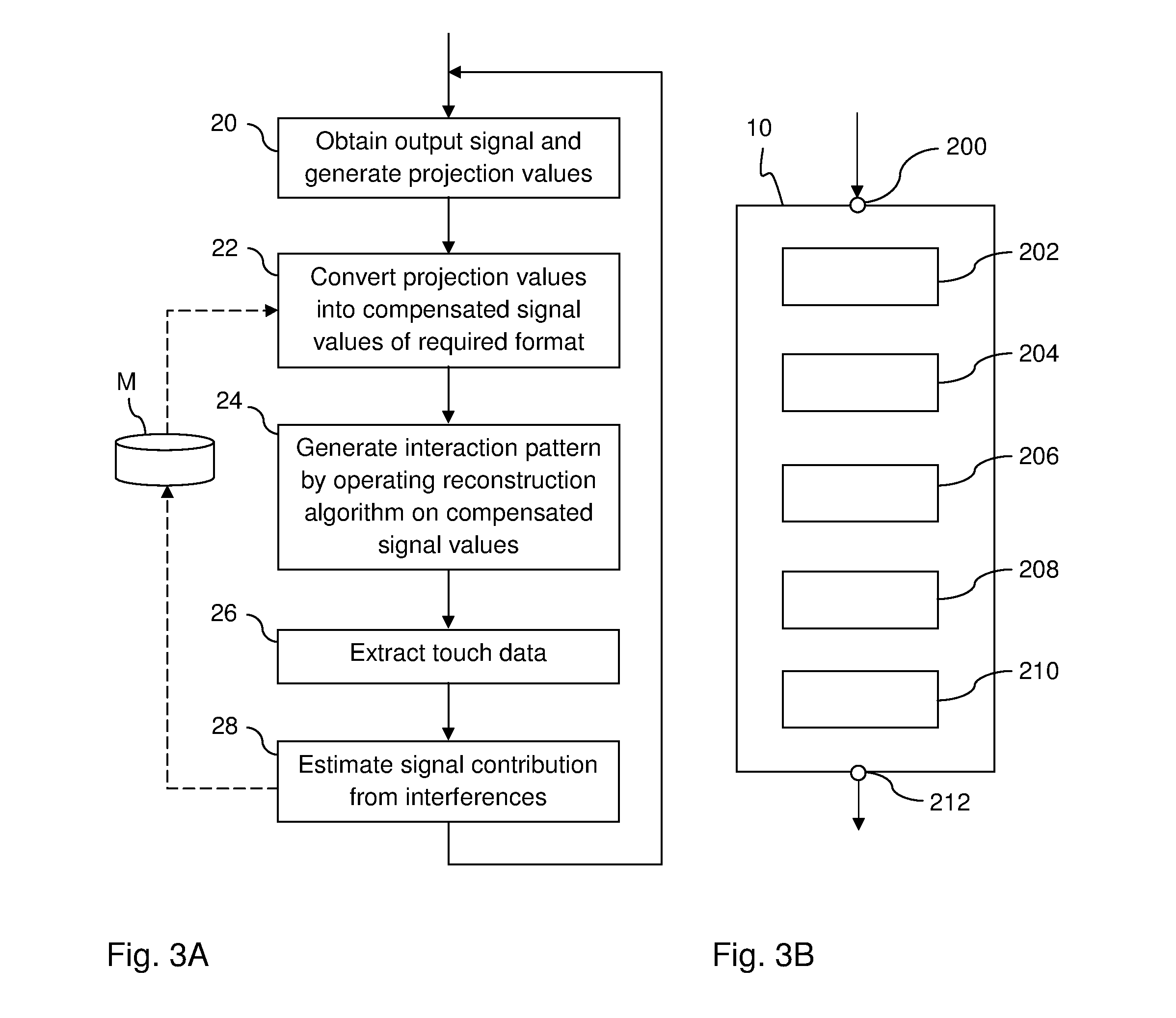Touch determination with signal compensation
a signal compensation and touch technology, applied in the field of touch sensing systems, can solve the problems of difficult to properly detect the touch on the touch surface at all, the degree of interaction between the touching object and the touch surface may vary both, and the user experience will be greatly hampered, so as to suppress the influence of signal interference in the resulting interaction pattern, and facilitate the task of identifying touches.
- Summary
- Abstract
- Description
- Claims
- Application Information
AI Technical Summary
Benefits of technology
Problems solved by technology
Method used
Image
Examples
Embodiment Construction
[0052]The present invention relates to techniques for enabling extraction of touch data for multiple objects in contact with a touch surface of a touch-sensitive apparatus. The description starts out by presenting the underlying concept of such a touch-sensitive apparatus, especially an apparatus operating by frustrated total internal reflection (FTIR) of light. The description continues to present embodiments for suppressing the influence of signal interferences in a touch determination process. Finally, detailed examples are given.
[0053]Throughout the description, the same reference numerals are used to identify corresponding elements.
1. Touch-Sensitive Apparatus
[0054]FIG. 1 illustrates a touch-sensitive apparatus 100 which is based on the concept of transmitting energy of some form across a touch surface 1, such that an object that is brought into close vicinity of, or in contact with, the touch surface 1 causes a local decrease in the transmitted energy. The touch-sensitive appa...
PUM
 Login to View More
Login to View More Abstract
Description
Claims
Application Information
 Login to View More
Login to View More - R&D
- Intellectual Property
- Life Sciences
- Materials
- Tech Scout
- Unparalleled Data Quality
- Higher Quality Content
- 60% Fewer Hallucinations
Browse by: Latest US Patents, China's latest patents, Technical Efficacy Thesaurus, Application Domain, Technology Topic, Popular Technical Reports.
© 2025 PatSnap. All rights reserved.Legal|Privacy policy|Modern Slavery Act Transparency Statement|Sitemap|About US| Contact US: help@patsnap.com



